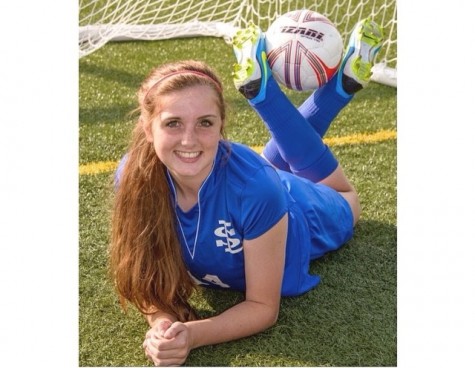Forecasting for Next Year: Everything You Need to Know
Mr. De Ieso advertising the new section of La Salle’s website that features forecasting information.
March 9, 2015
Every year, students have the chance to pick some of their classes for the following year that they either are really interested in, or need to take in order to fill a credit. This year, La Salle forecasting for the 2015-2016 school year begins on March 16th, where new forecasting information, as well as the forecasting forms, will be given to students in a special Monday Falcon Formation class period.
After returning from Spring Break vacation, students will bring in their completed forecasting forms and enter into PowerSchool their choices for next year’s classes. A new option this year is an online forecasting form that students can print out and fill out at home.
Some new classes are being provided for the 2015-2016 school year, including Introduction to Computer Science, Honors Algebra II/ Trigonometry, and Intermediate / Advanced Art. For more information, students should talk to their counselors.
Mr. De Ieso, who is in charge of forecasting, also really encourages students to take a summer class this summer through La Salle. “It’s a great way to free up space in your schedule for next year,” he says. Students can earn a half credit for taking a short 5 week class for a couple hours a day in their World History II, Sacred Spaces, P.E., and English classes, as well as a newly added class to the summer program this year: Speech and Debate with Mr. Doran.
Counselors are the people to go to for help and advice because they are the best ones to help students figure out what classes they want and should take, which is why students are strongly encouraged to start talking to them as soon as they can. “I’d recommend students not only talk to their counselor, but also their teachers and of course their parents,” says Mr. De Ieso. Parents and teachers can give you great insight on what you should do.
Also, when forecasting for classes for next year, Mr. De Ieso recommends that students should not be afraid to ask any questions they have. In order to get the classes you want or need to take, it can be very helpful to get some input from parents and teachers, and see what they say about the classes you’re considering taking. Students can even talk with their friends about what classes they are taking to get some ideas. However, Mr. De Ieso says to keep in mind that some classes that are right for them might not be the ones for you.
Mr De Ieso says that one of the worst things a student can do is procrastinate on this necessary process. In fact, they should try their best to get a head start on this. That way, students don’t have to worry about the deadline, not getting the classes the want or need, etc.
Mr. De Ieso also suggests that the students who are going to be seniors should plan on taking a fourth year of both math and science, even though they are not required. Once a student makes a decision, they should try their best to stay committed. “Staying committed to your choices will work for you if you take the time to ask questions, plan carefully, and have some grit,” says Mr. De Ieso. “What’s grit you ask? It’s being persistent in never giving up and not taking the easy way out. People who stay committed end up being successful and being happy when all is said and done.”
For additional information, students can go to lsprep.org/forecasting, where “students can download forms, get advice from counselors and watch short video clips on choosing the right course,” says Mr. De Ieso.
Students should be sure to get a head start on forecasting for next year so they can make their future school year the best one yet!





